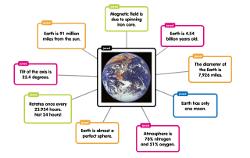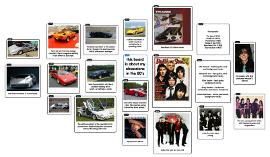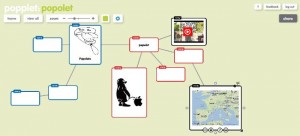The webQDA case study was written by António Pedro Costa (Education faculty, Aveiro University, Portugal) who is doing a PhD in education and multimedia.
Beatnikmusik
Server sind häufig ein recht einsamer Ort: so metallisch, kalt (ich hoffe zumindest, dass mein Anbieter ALL-INKL diese gut kühlt) und leer. Die Abende sind voller Dataprocessing, Updating und vor allem aber voll damit, dem zufällig vorbeisurfenden Internetnutzer die richtigen Daten zu servieren. Wie sehr sehnt man sich dabei doch nach Gesellschaft; etwas Wärme und Geborgenheit für die geschundene Webseitenseele. Um SoSciSo.de nicht völlig dem Einsiedlerdasein (und damit vielleicht auch der dunklen Macht?!) zu überlassen, haben wir uns entschlossen, ihr einen Begleiter zur Seite zustellen. Ein Begleiter, der sie an den tristen und langen Winterabenden erheitern kann. Einer, der über Musik und Philosophie zu parlieren versteht. Kurzum, ein Begleiter und Freund. Dieser nennt sich Beatnikmusik.de und ist der Blog eines Freundes, Monsieur Beatnik, welcher über verschiedene rockige Themen (Progressive, Blues, Psychedelic, Garage, Ethno, Funk, Sixties, … ) zu berichten vermag. Außerdem widmet er sich diversen philosophischen Themen (Foucault, Heidegger, Nietzsche, Deleuze…). Und wie für den Webserver so gilt auch für den Besucher von SoSciSo: wer etwas Zerstreuung sucht, möge bitte auf beatnikmusik.de vorbeischauen und einen Nicht-Muttersprachler (das macht u.a. auch den Reiz des Blogs aus) über Gott und die Rockwelt referieren lesen. This text is intentionally filled with: this text is intentionally filled with: this text is intentionally filled with: … (got it?)
At SoSciSo we always try to inform you as detailed as possible about any kind of software related to the social science research process. This means both, qualitative as well as quantitative methods and its software.
While researching this field, we often discovered excellent sites on software for quantitative methods and statistics. We do not want to simply copy and paste these informations and decided to stop researching these programmes and to give you simply the links for these excellent collections on the web. You can find it like for every other category under the programme overview in the ‘Links quantitative’ area.
A stunning collection can be found understatistiksoftware.com. There is also a special area where Free and Open Source Software is listed. Our favorites:
PSPP (“It is a Free replacement for the proprietary program SPSS, and appears very similar to it with a few exceptions.“)
R (“R is a language and environment for statistical computing and graphics. R provides a wide variety of statistical (linear and nonlinear modelling, classical statistical tests, time-series analysis, classification, clustering, …) and graphical techniques, and is highly extensible.“)
Whether the professors on the nichtlustig.de cartoon used some of these tools, to come to the relation between beans and bath foam (see the leo forum discussion where some German/English linguists discuss the topic bath foam/foam bath…whatever) or not, is hard to tell through the cartoon. One can eliminate some bias from consuming beans in ‘bacon coat’ or sauerkraut. Based on the cartoon, we can eliminate both….
mind mapping with Popplet
We recently researched on software for creating mind maps. Meanwhile we stumbled upon Popplet. Somehow, we were immediately fascinated by Popplet. We quickly register at their website and could directly start to storm our brains and map our minds. All in a sudden, everything seemed to be so easy. We felt really close to the ground breaking idea. She didn’t came. But it was not the fault of the programme but our limited abilities:
For a few mind maps (5) the free version is sufficient enough. The handling is really intuitive. The GUI is colorful, it all looks playful but not overloaded. You can add images and videos from Youtube, Flickr, Facebook or your computer. Google Maps can also be embedded. Compared to other mind mapping tools you can concentrate on the essential: creatively playing around and hopefully filling the mind map with crazy ideas.
CAQDAS Software Sonal
Today we have some news from the French and from the most beautifull city in the world. The software Sonal is not quite new but it was only recently that somebody recommended Sonal to me at researchgate.net. There is no information yet in English or German and it also seems that the software itself is purely in French:
“Sonal est un logiciel gratuit et innovant de retranscription d’entretiens. Il permet de facilement retranscrire, catégoriser et analyser vos interviews, directement à partir de vos fichiers audio.“
Interview RE-transcription is the keyword. We couldn’t find it in English and thus tried to translate it with transcript analysis. We therefore grouped Sonal under Qualitative Data Analysis. On their website there is a video presenting their software in a short. Even without French language knowledge you can grasp a good sense of what you can do with the software. Overall it looks quite colourful. We tried to run it here in a virtual Windows 7 machine but we didn’t succeed yet. If there is anybody out there how ever worked with Sonal, we would be happy to get some case studies or reports on it. After all, it seems to be a very interesting project. the software is freely available and the source will be published soon (!?) under a open source licence.


